‘It got ugly’: How Cabbage Patch Kids brought out the nastiness in holiday shoppers
Cabbage Patch Kids were the toy back in the 1980s.
These pudgy baby dolls had humble beginnings but caused a frenzied shopping season so memorable, we’re still talking about it 40 years later.
From the Appalachian foothills to across the nation
The Cabbage Patch Kids, as we now know them, were the brainchild of Georgia native Xavier Roberts.
Roberts discovered an old German technique for fabric sculpture while attending college as an art student. This technique from the 1800s would inspire the iconic Cabbage Patch Kids dolls.
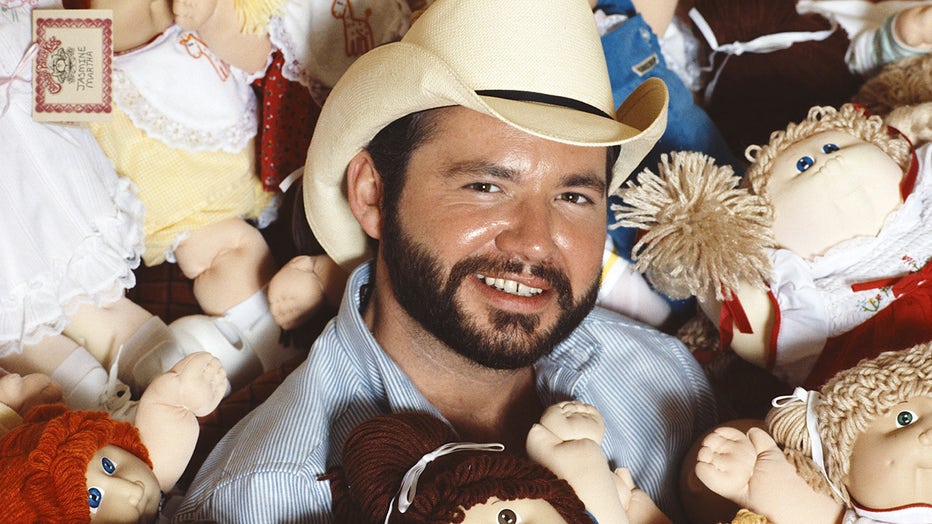
File: Cabbage Patch Doll creator Xavier Roberts sits amongst a group of Cabbage Patch Kids at a London hotel ahead of the toys being introduced into the U.K. Christmas market in London, U.K., on Thursday, December 8, 1983. (Photo by Bryn Colton/Getty
Originally dubbed Little People, Roberts began creating these soft sculptures in 1976 and began selling them.
Then the BabyLand General Hospital was built where kids could "adopt" these handmade dolls and this move would prove critical to the dolls’ future success.
Little People began to gain national recognition and Roberts decided to partner with Coleco, a massive toy maker at the time, to rebrand the dolls and begin mass producing them in 1982.
The newly renamed Cabbage Patch Kids were featured on the cover of Newsweek, made an appearance at the International Toy Fair of New York City and had "mass adoption" events across the country.
Cabbage Patch Kids riots of 1983
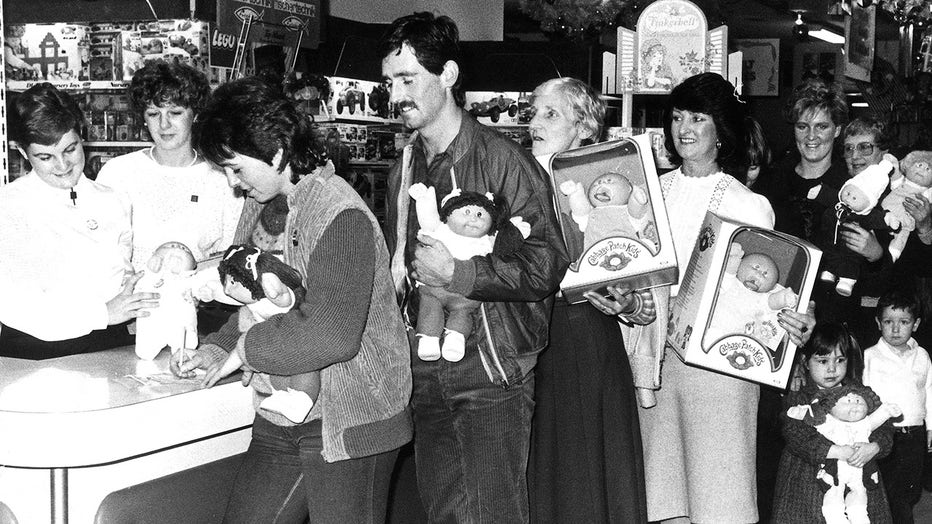
File: Britain went bonkers for the Cabbage Patch Kids, which were marketed as adoptable, on November 1, 1983. (Photo by SSPL/Getty Images)
The craze over these dolls was so intense it’s said to have sparked the retail phenomenon we know today as Black Friday.
In 1983, demand exploded for these plush dolls and the day after Thanksgiving, hordes of shoppers clamored for the season’s hottest toy.
"I looked all over. I was in Washington DC, and they had none in Washington DC. So I came to Stone Mountain and they don’t have any here either," disappointed shopper Sherri Crawford told Atlanta’s WAGA-TV back in 1983.
The places that did have dolls had a different problem – violence.
"A crowd of 5,000 stormed a Charleston, West Virginia, department store," Time magazine reported days later.
"They knocked over the display table. People were grabbing at each other, pushing and shoving. It got ugly," a manager told Time, which reported that "he armed himself with a baseball bat to defend his position behind the counter."
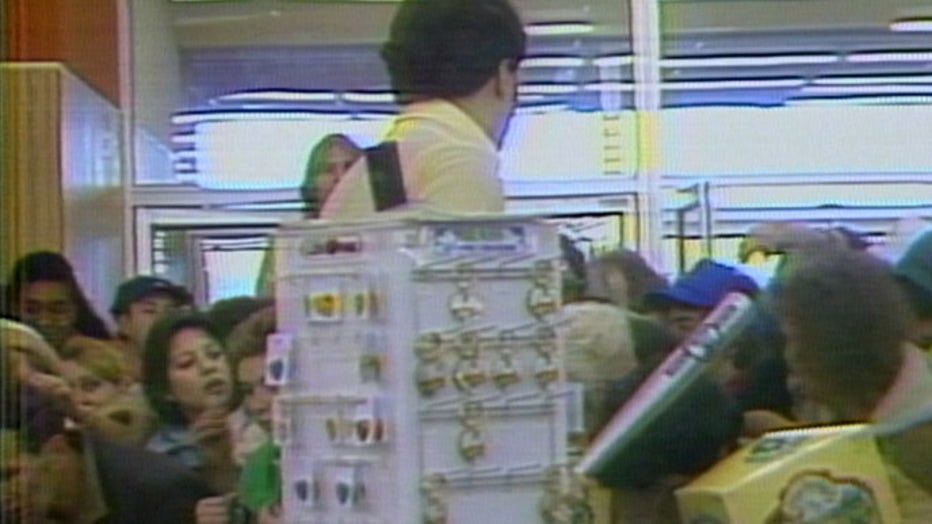
TV footage from 1983 shows a store manager in Wilkes Barre, Pennsylvania using a baseball bat to control unruly shoppers (via WTTG).
One woman suffered a broken leg "when another crowd of 1,000 turned violent after waiting eight hours to get into a Zayre store in Wilkes-Barre, Pennsylvania," Time reported.
"I think it was over-advertised and under-produced," toy store FAO Schwarz spokesperson FAO Schwarz told WTTG-TV at the time. "In order to help satisfy the demand of the children, we’re trying to find alternates that parents can buy."
Partly responsible for that frenzy was New York City legend of public relations Richard Weiner, backed by the money and distribution reach of Coleco.
"Weiner…sparked the fad by winning segments on three network morning TV shows in early November" of 1983, public relations industry newsletter O’Dwyers wrote in a 2014 obituary.
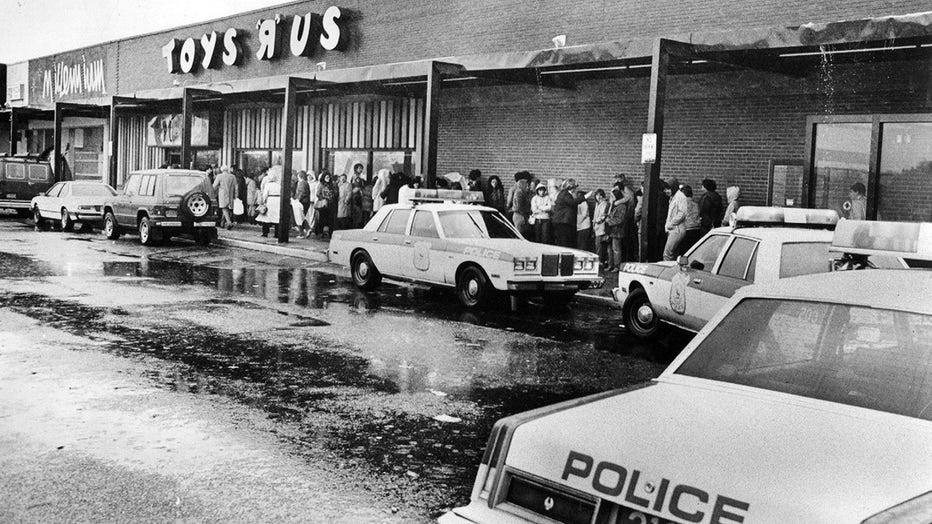
File: Police were called to dispel a disturbance at the Toys "R" Us in Huntington, New York on November 25, 1983. The toy store had run out of Cabbage Patch Kids dolls and holiday shoppers who had waited up to four hours for the dolls were irate. (Ph
Those appearances were in addition to the "mass adoption" events at high-profile, kid-friendly locations, which generated further TV coverage.
Almost 3 million Cabbage Patch Kids were adopted that year, according to the Cabbage Patch Kids website.
And while these dolls don’t have the hype they once did, their influence over the toy market and holiday shopping trends is everlasting.
In fact, the National Toy Hall of Fame noted that Cabbage Patch Kids inspired later holiday crazes, including Tickle Me Elmo, Beanie Babies and Furby.
Fun facts about Cabbage Patch Kids dolls
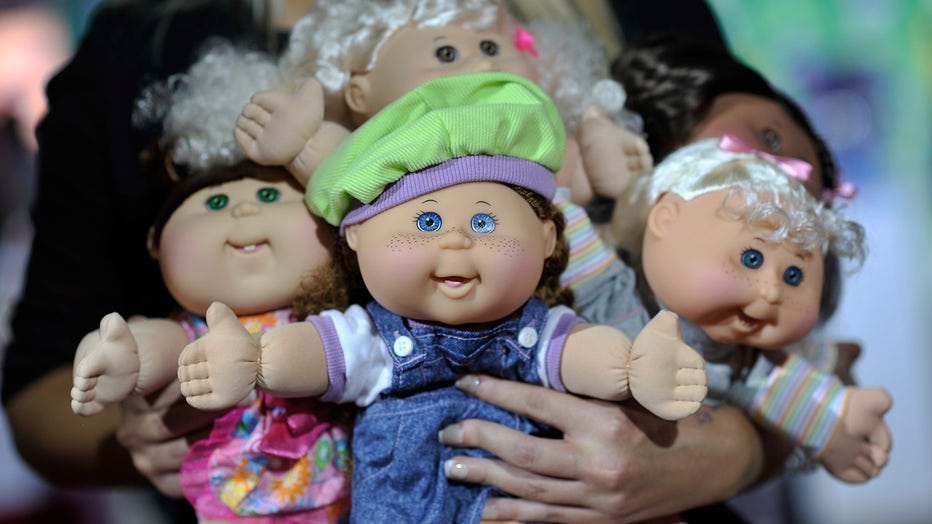
File: Cabbage Patch Kids at the launch of Dream Toys 2012 at St Mary's Church on October 31, 2012 in London, England. (Photo by Gareth Cattermole/Getty Images)
- The Cabbage Patch Kids doll was the most successful new doll introduction in toy history, according to the company’s website.
- Thanks to a mix of facial features and hair colors and styles, Coleco’s initial marketing claimed no two dolls were alike.
- Martha Nelson (later Thomas), sued Xavier Roberts for $1 million, claiming he stole her doll concepts after the two met and did business together in 1976. The claim was later settled out of court for undisclosed terms.
- In 1985, Cabbage Patch Kids joined the Young Astronaut Program and "Christopher Xavier" became the first Cabbage Patch Kid to go into outer space aboard the U.S. space shuttle.
- The dolls were so beloved that in 1992 they became the official mascot of the U.S. Olympic Team and traveled with athletes to Barcelona, Spain.
- In November of 2023, the Cabbage Patch Kids dolls were officially inducted into the National Toy Hall of Fame.
RELATED: The rise and fall of Black Friday
FOX News contributed to this report. This story was reported from Los Angeles.

